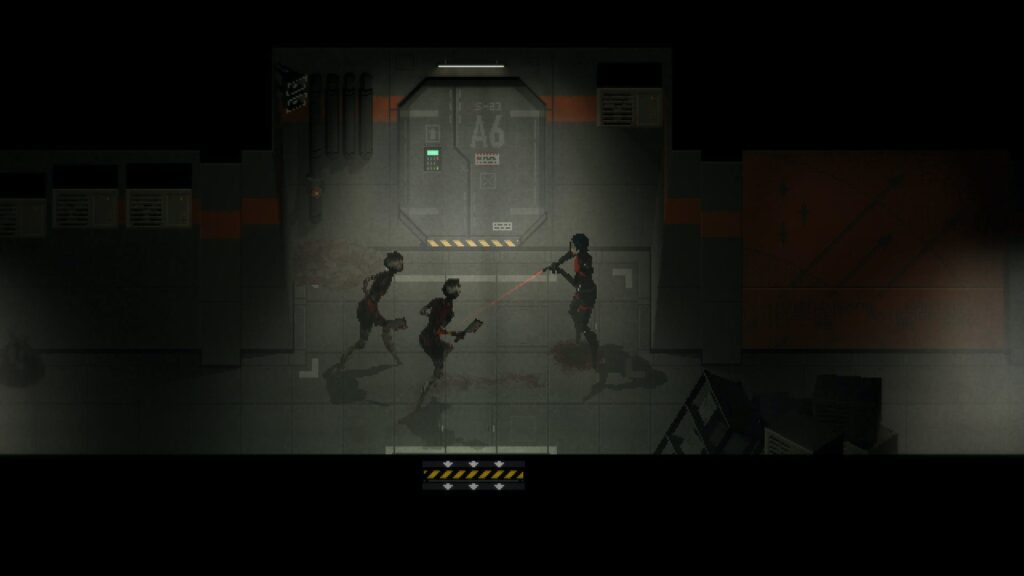New Resident Evil games are great, but there’s still something about the slow, grimy, and mysterious older entries in the series. There’s a particular mood that comes from the steady pace, rough graphics, and convoluted puzzles that make PlayStation-era horror still stand out. And while developer Rose-Engine’s Signalis is a modern release, it channels some of the best parts of series like Silent Hill, Resident Evil, and Dino Crisis for classic scares.
Signalis puts you in the role of Elster, a sort of synthetic worker who, at the outset of the game, finds herself awakening on an empty, wrecked spaceship. Her memories are mostly gone, but she manages to make her way to an underground facility, knowing little more than she’s searching for someone. The rest of the game is a dozen hours of piecing together who Elster is as well as the truth behind the horrors of the facility she’s exploring.
If you’ve played any of the aforementioned horror games, Signalis will feel instantly familiar, evoking long-lost days of gripping a gray PlayStation controller tightly while running from zombies. The third-person horror game has a steady pace to it; Elster thankfully doesn’t have the infamous Resident Evil tank controls, moving with more fluidity, but she still explores slowly, and aiming can be a struggle.
This, of course, makes it all the more terrifying when bloodthirsty synthetic machines are after you. Signalis isn’t technically a zombie game, but many of its enemies — the glitched-out remnants of an underground worker colony — can feel like the shambling undead. As a survival horror game, Signalis also has other genre staples, like a tiny inventory (you can only hold six items at a time), limited resources (I always need more shotgun shells), and oh so many doors that require cryptic keycards before you can proceed. That said, there are a few more modern touches, like less punishing save points and, my personal favorite, a map that’s packed with just the right amount of useful information.
The game also looks the part. While Signalis isn’t a 32-bit game, it often looks like one, with grainy, blocky visuals and frequent glitches that make you feel like a synthetic being that’s slowly losing its synthetic mind. The rooms are small and cramped inside an oppressive, brutalist building, adding to the tension, and the enemy designs are simple yet menacing. There’s also a real analog feel to the game, with puzzles that involve lots of big switches and dials, and the ability to look at the polygonal items in your inventory up close, like they’re real objects.
Signalis does an incredible job at steadily increasing the dread. When it starts out, it’s mostly just lonely. You’re alone in a dark facility, most of which is locked up tight. But as you open doors and delve further underground, the terror increases exponentially. You go from searching through bland, dark offices to stalking through medical facilities and, eventually, extremely gross horrors that I won’t spoil. The same goes for the cryptic storytelling, told mostly through old notes and diaries, which starts out as some straightforward descriptions of the facility before taking a dark descent into madness. It’s the kind of game where you’ll open up a note that just says “leave this place” and nothing else.
All that said, as much as I loved the old-school feel of Signalis, there are some places where it can feel frustratingly dated. A few of the puzzles are far too convoluted and forced me into trial and error, which temporarily killed the game’s momentum. (The majority of the puzzles are great, though, and I even broke out a pen and notebook to solve some.) And while I appreciate the small inventory and how having to make hard choices about weapons and healing items can make things scarier, it’s still annoying; I spent a lot of time backtracking because I had to store my keycards or other items in a safe box until I needed them.
These moments can add a bit of tedium to the experience, but they don’t detract from what Signalis is. It’s refreshing to be reminded of why this style of horror is so effective. Signalis isn’t shy about its influences, but it’s so well crafted. By the time it’s all done, the game definitely has its own distinct identity — and plenty of grainy horrors to haunt your dreams.
Signalis is available now on the PC, PS4, Nintendo Switch, and Xbox One.

